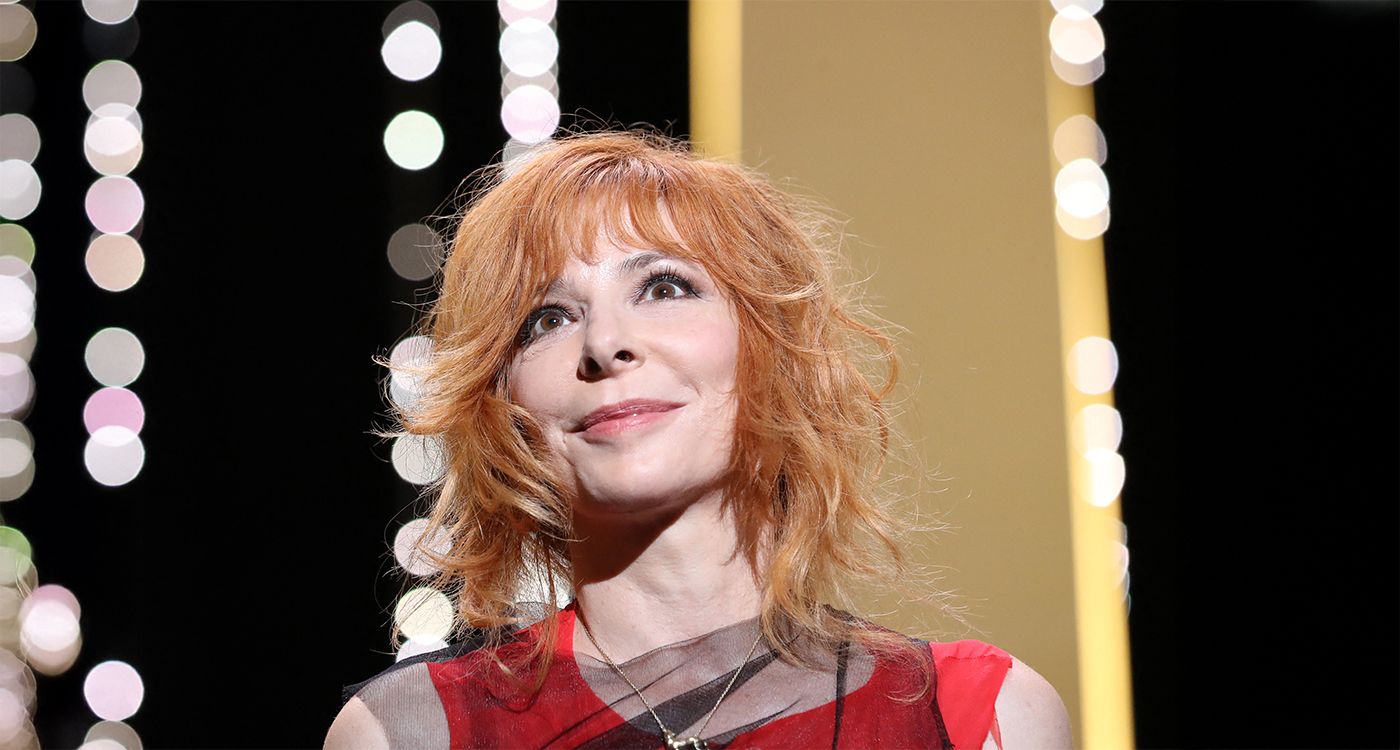
Half-shadow, half-light, Mylène Farmer reemerges at Cannes with her mystery intact. Between her love of cinema and her fierce independence as an artist, she might grace the stage with a previously unheard song. A moment suspended in time.
Between her passion for cinema and loyalty to the stage, Mylène Farmer is reportedly preparing a surprise for the opening night of the Cannes Film Festival on May 13, 2025, and possibly unveiling a previously unreleased track. A look back at the path of an unparalleled artist.
Among the most anticipated moments of this year’s opening ceremony, one may leave a particularly deep impression. Mylène Farmer is expected to step onto the stage as a guest of honor. A former jury member, she returns this time in the spotlight, with the possibility of performing an original, never-heard-before song.
Mylène Farmer, born Mylène Gautier in September 1961 in Quebec, moved to France with her family at the age of eight. A quiet child, struggling to find her place, she often retreated into dreams and solitude. Beneath the silence and boyish demeanor immortalized in Sans contrefaçon, lived a world of introspection and melancholy, something she would later sing without hesitation, notably in Je t’aime mélancolie.
In Brittany, her mother’s birthplace, she spent time caring for ill children and absorbing the region’s raw beauty. The Breton wind swept through her imagination, and her words began to form with the ebb and flow of the tides. She once dreamed of becoming a horseback-riding instructor for children with disabilities. But life took her to Paris, where she trained at Cours Florent for two years to become an actress. Along the way, she met Jérôme Dahan and Laurent Boutonnat. For them, she recorded Maman a tort, a track initially met with industry skepticism, but it broke through, revealing a singular voice and a deeply unsettling presence.
Mylène Farmer is an artist who shuns the limelight. Beyond her stage appearances, she protects her mystery. On stage, her performances are choreographed with near-military precision, echoing American showmanship—a first in France. Her music videos are short films: macabre and poetic, always staged with intent. Her voice, punctuated by profound silences, transcends time and draws the audience into a world of duality—half-angel, half-devil. She is so haunting in her words, her pauses, her presence, that Salman Rushdie once described her magic as that of a “fallen angel.”
Mylène Farmer is a complete artist, forever seeking new creative terrain. She sings, writes, scripts her films, paints, choreographs and illustrates. She even designed the covers for Marc Levy’s Where Are You? in 2001 and Michel Onfray’s L’Étoile polaire in 2015. She’s never been afraid to show herself fully, unapologetically. Yet, she protects her authenticity from the ego games of awards and accolades, which she once called hypocritical. Her success lies in raw talent, tenacity and staying power. Mylène Farmer has never compromised who she is. She shows herself exactly as she is: bold, vulnerable, incorruptible.
Libertine, released in 1986, caused a scandal, not just for its unapologetic nudity, but for its brutal visual strength and graphic violence. Désenchantée, in 1991, became her biggest hit in France and abroad. A generational anthem, the song is still hummed by both young and old listeners.
That same year, tragedy struck. An obsessed fan murdered an employee at her record label after being denied her address. Shaken, she fled to Los Angeles. In 1995, she returned transformed. The album Anamorphosée marked her rebirth — radiant, rock-tinged and deeply poetic. Her world is dark, yet streaked with light. Blending elements of theater, dance and dream, she crafts experiences that are both precise and ethereal, rooted in universal themes. At once fragile and grounded, she teeters between “spleen and ideal,” singing of loneliness, death, desire, love, identity and existence. Her music spans synthetic pop, electro, lyrical ballads and interior rock—all sculpted into a symbolic, gothic, provocative, elegant and surreal universe. On stage, she gives herself completely, with voice, gaze and silence.
Since the 1990s, Jean-Paul Gaultier has woven a unique creative partnership with Mylène Farmer. Her costumes are extensions of her spirit. He’s crafted legendary looks—the black dress from Que mon cœur lâche, the breastplate in Comme j’ai mal. Together, they shaped a visual iconography: outfit after outfit, Gaultier tailored her dualities: strength and delicacy, provocation and modesty, sensuality and metaphysical yearning.
Mylène Farmer’s presence always stirs fascination. In 2024, the FNAC Ternes store in Paris hosted a pop-up dedicated to her Nevermore tour. It featured collector’s items, exclusive remixes and scenographic tributes.
The concert film of the tour premiered exclusively at the Grand Rex in November 2024. It broke records: 14 stadiums, the largest tour ever staged by a female artist in France. Farmer made a brief surprise appearance during the screening—fans were stunned, their shouts of joy filling the air.
She embodies a shared memory. With more than 20 number-one singles, 58 top 10 tracks and albums consistently topping the charts, she is the only female artist in France to reach no. 1 on the albums chart across five decades. Mylène Farmer is not just a pop star, she’s a living legend, an artistic enigma, a myth as haunting as it is real.
In 2005, she was awarded “Female Artist of the Past Twenty Years.” She didn’t attend. Instead, she sent a brief statement, reminding the industry that her latest single was titled Fuck Them All. Then, in a singular move, she requested that she never be nominated for another award again.


Comments